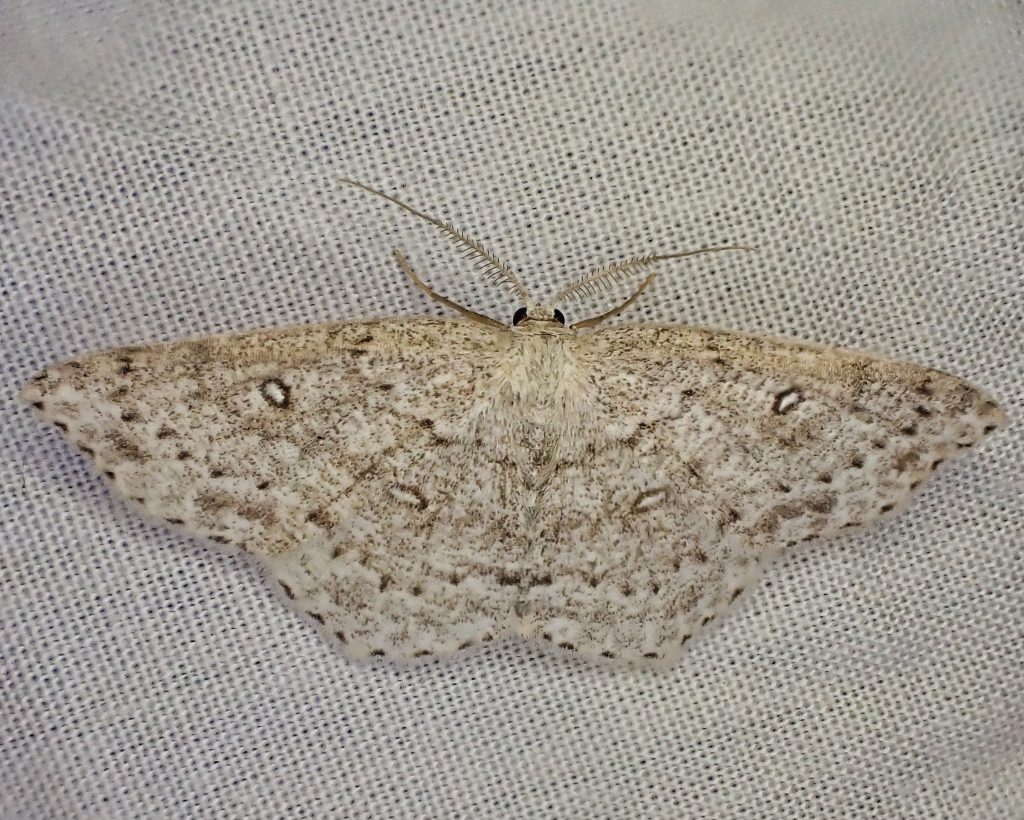
There were at least 3 of these handsome little geometrid moths that visited my lights last Tuesday. They are a docile moth, settling down quickly and seldom moving the rest of the night. I’m a little surprised I haven’t profiled them before, because I usually see at least one whenever I run lights around red alder (Alnus rubra). But I guess I’m not immune to favoring the more spectacular, brightly colored species.
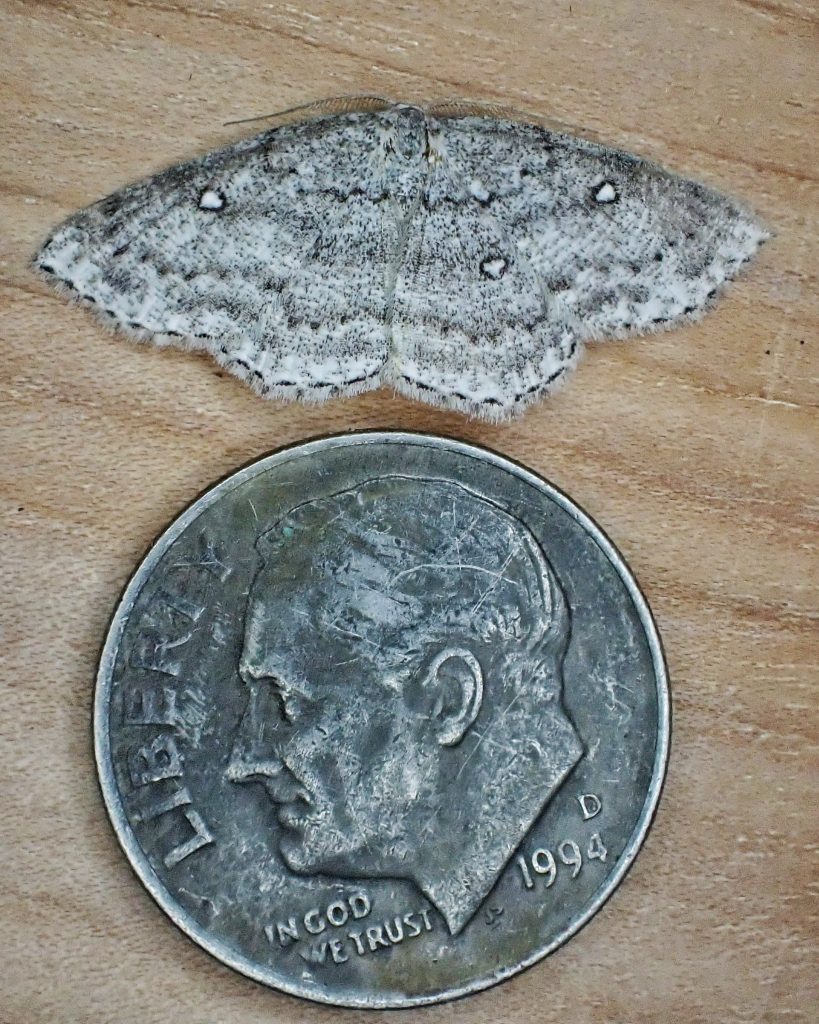
Sweetfern Geometer is the most used common name for this moth, but it is a bit of a misnomer for a couple of reasons. For one thing Comptonia peregrina (Sweetfern) is not a fern, but a flowering plant in the family Myricaceae. And it does not grow in our region (in fact it only grows naturally in eastern North America), so our moths are not using it as a larval host. That is why I prefer the more descriptive and accurate common name pearly-grey wave for these moths, especially the ones found in our region.
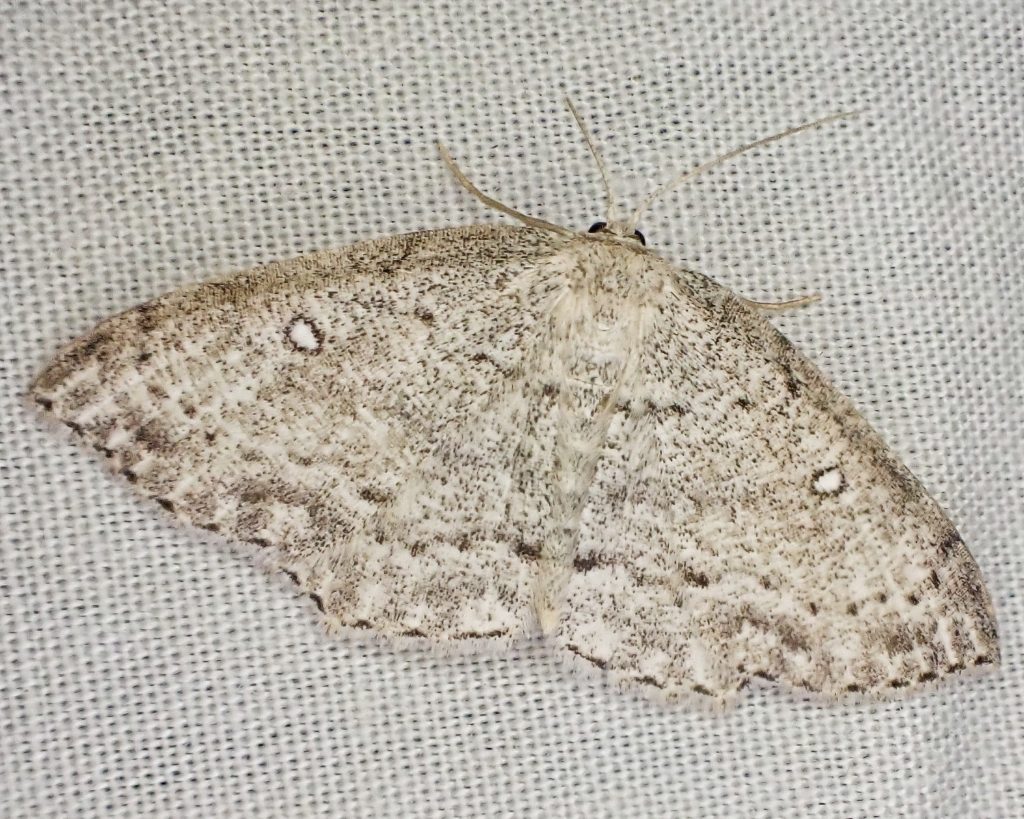
Description– “Wingspan 17-26 mm…wings white or various shades of gray to blackish-brown (melanics); discal spots hollow – round on forewing, oval on hindwing; AM and PM lines sharpest but usually broken to dotted; median line more diffuse; shading also variable.”Species Cyclophora pendulinaria – Sweetfern Geometer – Hodges#7139 – BugGuide.Net
“small pale grey geometrid with dotted AM and PM lines, and occasionally a suffused median line; terminal line a row of fine black spots. The discal spots are white and outlined in dark grey…The larva is extremely variable in colour, ranging from green to yellow, orange brown or purple-brown…” Cyclophora pendulinaria – University of Alberta Museums Search Site ; good photos of the larvae can be found at the Moth Photographers Group
Similar species–Cyclophora dataria is yellowish brown and has a bolder medial line; C. packardi is yellowish to orangeish brown, and probably isn’t found in our region
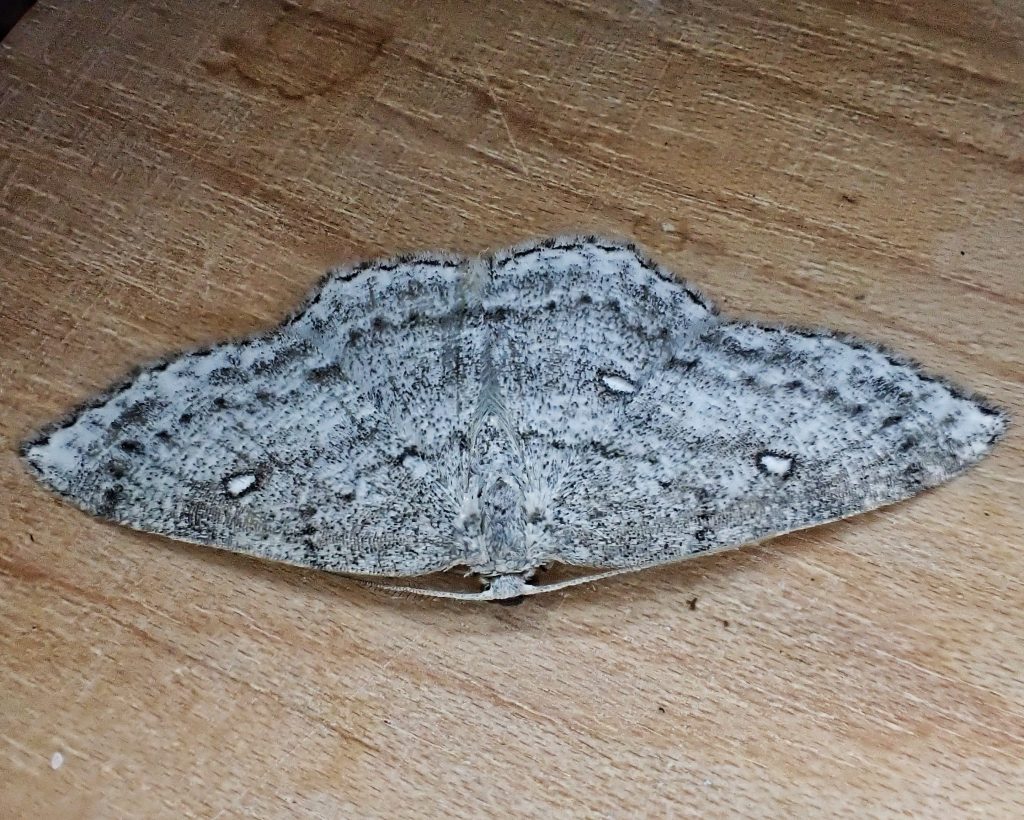
Habitat-Moist to mesic mixed forests containing some of its larval hosts.
Range– Northern North America, extending as far south as Virginia in the east, and Colorado in the west; found region wide in the PNW wherever its host plants are found.
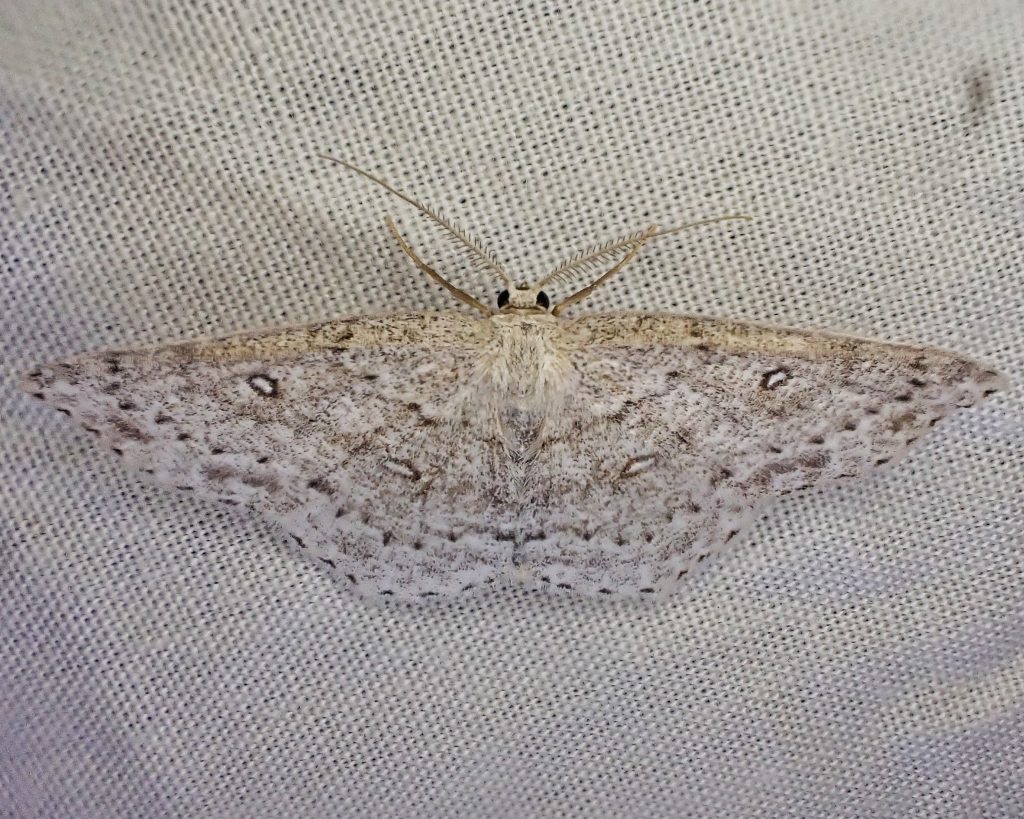
Eats– “Larvae feed on alder, beech, blueberry, snakeroot, sweet-fern” Species Cyclophora pendulinaria – Sweetfern Geometer – Hodges#7139 – BugGuide.Net ; “when feeding, larvae usually eat leaf tissue without cutting entirely through leaf” Cyclophora pendulinaria – University of Alberta Museums Search Site ; by blueberry I believe they mean plants in the genus Vaccinium, and by snakeroots I believe they mean members of the genus Ageratina, of which the only species in our region is A. occidentalis; beech and sweetfern only grow naturally in eastern North America.
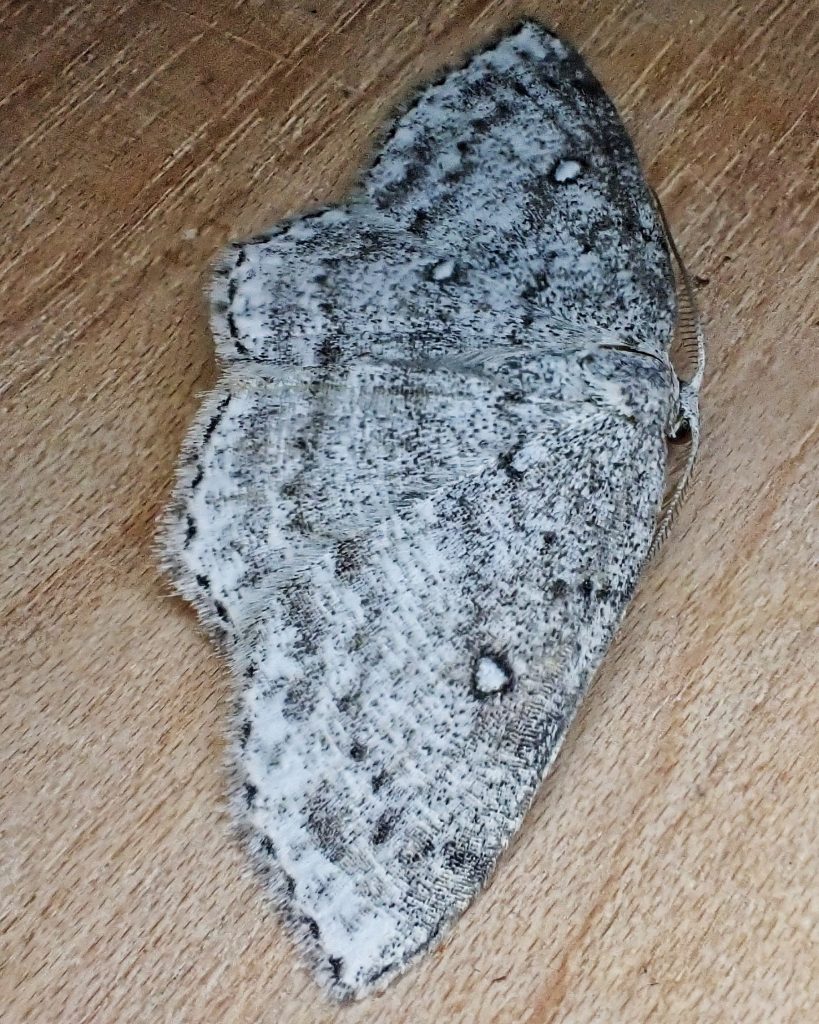
Eaten by– Presumably any insectivores that can catch and subdue them.
Adults active– May through August in our region
Life cycle– Overwinters as pupa; may be bivoltine
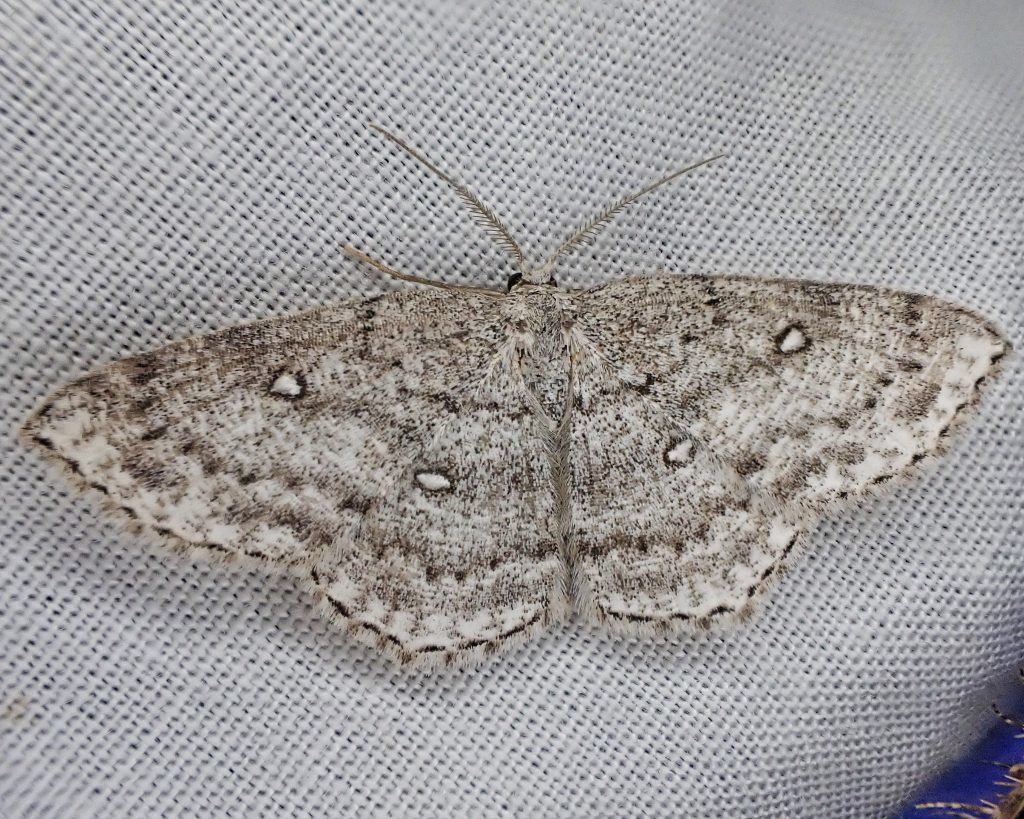
Etymology of names– Cyclophora is from the Greek words for ‘ring bearing’, referring to the circular discal spots on fore- and hindwing of many members of this genus. The specific epithet pendulinaria may be from the Latin words for ‘hanging by a thread’, and may refer to the situation of the pupa, but I cannot verify either of these ideas.
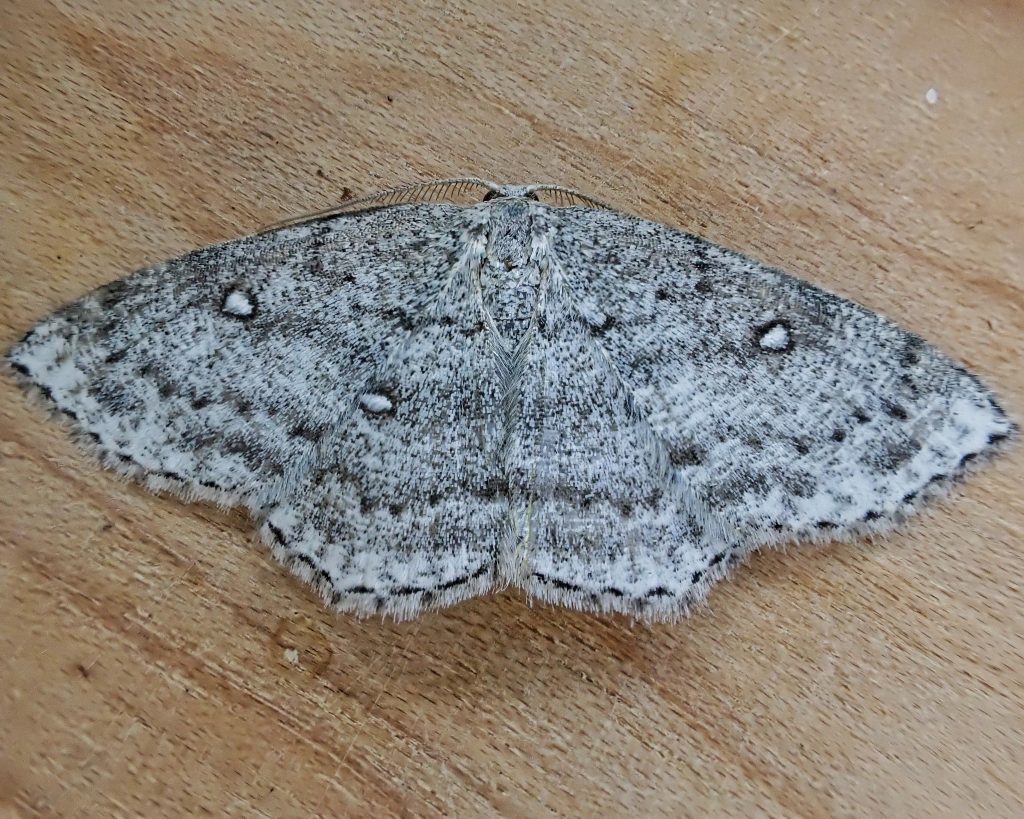
Species Cyclophora pendulinaria – Sweetfern Geometer – Hodges#7139 – BugGuide.Net
Cyclophora pendulinaria – University of Alberta Museums Search Site
http://mothphotographersgroup.msstate.edu/species.php?hodges=7139
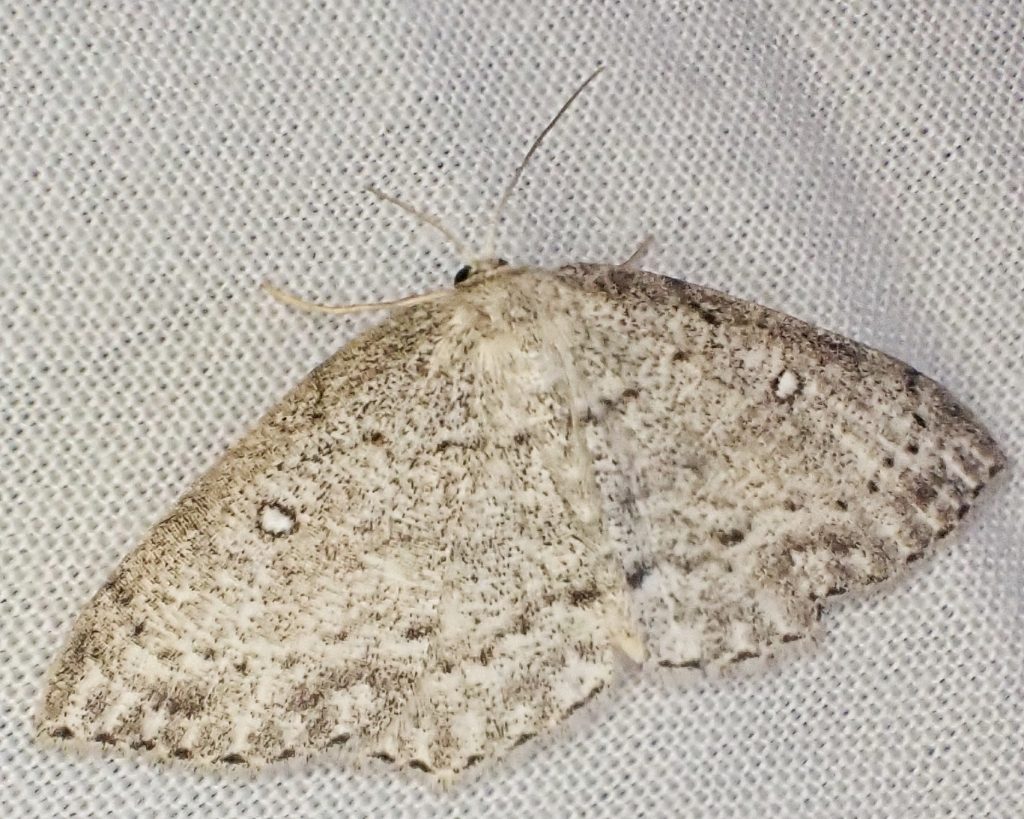
1 thought on “Cyclophora pendulinaria (Pearly- grey Wave)”